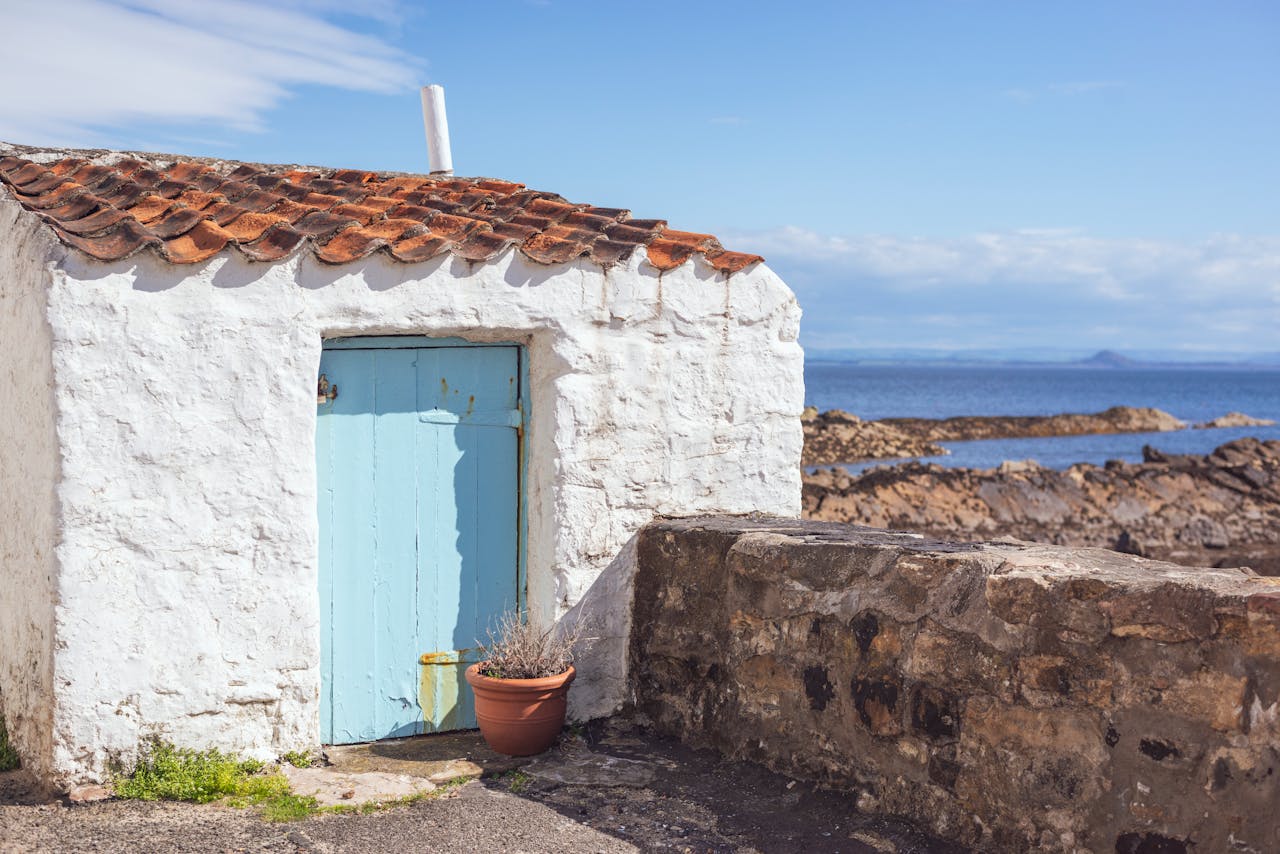Fishing Heritage
Pittenweem has a long-standing tradition as a fishing village, dating back centuries. The name “Pittenweem” itself comes from the Scottish Gaelic “Pitt” meaning “place” and “na h-Uaimh” meaning “of the caves,” referring to the caves along its shore. The town’s harbour remains active today, with fishing boats bringing in daily catches, mainly shellfish like lobsters, crabs, and prawns. This fishing legacy is still visible in the harbour’s bustling atmosphere and the seafood offerings in local restaurants.
The Harbour and Village
The heart of Pittenweem is its harbour, a natural sheltered inlet where brightly painted fishing boats line the quayside. Surrounding the harbour are narrow, cobbled streets with traditional fishermen’s cottages, many of which are painted in the typical white with red-tiled roofs that give Pittenweem its distinctive character. The village has retained much of its historical charm, and walking through the lanes offers glimpses of the town’s seafaring past.
The Pittenweem Arts Festival
Pittenweem is particularly famous for its thriving arts scene, most notably its Pittenweem Arts Festival, an annual event that draws thousands of visitors each August. During the festival, local artists and artisans open their homes and studios to the public, transforming the village into a vibrant hub of creativity. The event features a wide array of artistic works, including paintings, sculptures, pottery, jewellery, and textiles, celebrating both local talent and international artists.
St. Fillan’s Cave
One of Pittenweem’s most notable landmarks is St. Fillan’s Cave, which is believed to have been the retreat of St. Fillan, a 7th-century Irish missionary who lived as a hermit in the cave. This small, atmospheric site is still accessible and serves as a reminder of Pittenweem’s spiritual history. Inside the cave is an altar, and it has been a place of pilgrimage for many over the centuries.
The East Neuk Coastal Path
Pittenweem is part of the Fife Coastal Path, a long-distance walking trail that runs along the beautiful coastline of Fife. The path connects Pittenweem to other picturesque East Neuk villages such as Anstruther, Crail, and St Monans, offering stunning views of the North Sea and the surrounding landscape. Walking the coastal path is a popular activity for visitors, as it provides the chance to explore the natural beauty of the region while experiencing the unique character of each village.
Historical Significance
While Pittenweem is primarily known for its fishing and artistic community, it also has historical significance. The village once had a royal charter as a burgh, granted in 1541, and was an important centre for trade in the medieval period. The village’s Tolbooth, dating from the 16th century, was once a courthouse and jail, and it stands as a reminder of Pittenweem’s role in local governance.
Local Cuisine and Seafood
As a fishing village, Pittenweem offers excellent seafood. Local eateries serve fresh catches straight from the harbour, including lobster, crab, prawns, and fish. Many visitors come to the village for the seafood alone, which is considered some of the freshest and finest in Scotland. Fish and chip shops, seafood restaurants, and local markets contribute to the village’s reputation for culinary quality.
Visitor Experience
Pittenweem is a wonderful destination for those looking to experience traditional Scottish village life. Whether wandering through the narrow streets, visiting the harbour, or exploring the local shops and art galleries, Pittenweem offers a peaceful, charming escape. The combination of its coastal beauty, historical sites, and vibrant arts culture makes it a must-visit for tourists exploring the East Neuk of Fife.
Conclusion
Pittenweem is a quintessential Scottish village that blends history, culture, and natural beauty. Its active fishing harbour, artistic community, historical landmarks, and scenic coastal location make it a popular destination for travellers seeking a mix of tradition and modern creativity in one of Scotland’s most picturesque settings.


